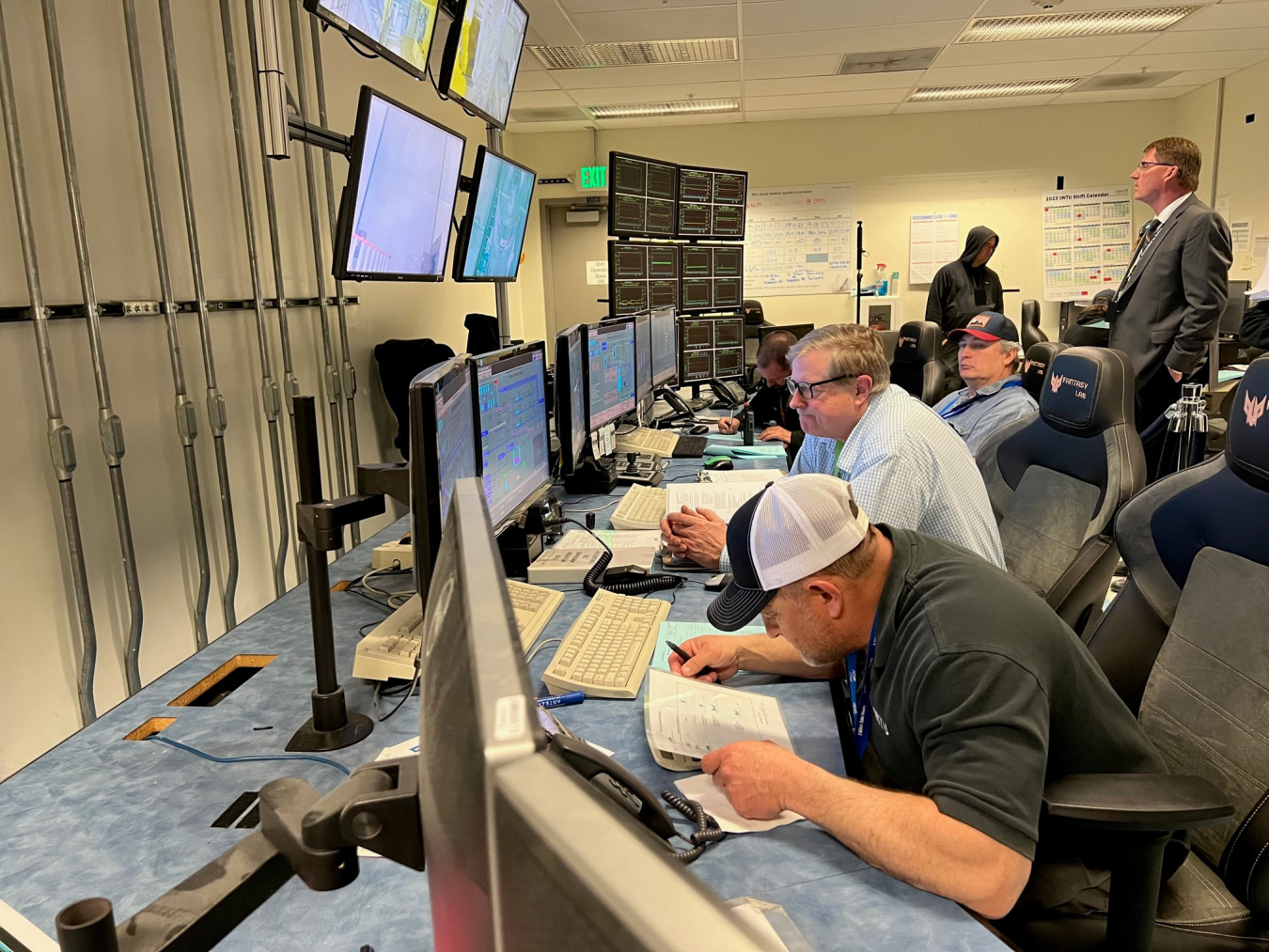Overview
The INL Site was established in 1949 as the National Reactor Testing Station. The original mission of the INL Site was to develop and test civilian and defense nuclear reactor technologies and manage SNF. Fifty-two reactors — most of them first of a kind — were built at the site, including the Navy’s first prototype nuclear propulsion plant. Of the 52 reactors, four remain in operation.
In 1951, the INL Site achieved one of the most significant scientific accomplishments of the century — the first use of nuclear fission to produce a usable quantity of electricity at the Experimental Breeder Reactor No. 1 (EBR-I). The EBR-I is now a registered National Historic Landmark open to the public. The Idaho Cleanup Project (ICP) at the INL Site is responsible for treating, storing, and dispositioning a variety of radioactive and hazardous wastes; removing and dispositioning targeted buried waste; removing or deactivating unneeded facilities; and managing — and ultimately removing — SNF and HLW from Idaho. Activities are primarily performed at the Radioactive Waste Management Complex (RWMC) and the Idaho Nuclear Technology and Engineering Center (INTEC) facilities.
ICP conducts briefings regularly with Tribal, state, and local officials. ICP often provides updates about cleanup activities to the Shoshone-Bannock Tribes, the Idaho Department of Environmental Quality, the Idaho Cleanup Project Citizen’s Advisory Board, and the Idaho congressional delegation’s regional staff.

Planned Cleanup Scope 2023-2033
Over the coming decade, cleanup activities at the INL Site will focus on completing treatment of remaining liquid sodium-bearing waste, facility decontamination and demolition, shipment of remaining TRU waste, and decommissioning and closure of facilities at the RWMC and INTEC.
With the completion of buried waste exhumation at the RWMC, work is now underway to close and demolish waste processing facilities at the Subsurface Disposal Area (SDA). The SDA will be closed and permanently capped to meet a 2028 requirement. RWMC area closure is planned for 2028.
Activities at INTEC will increase for sodium-bearing waste, calcine, and SNF operations during the coming decade. Sodium-bearing waste processing at the IWTU is expected to finish by the end of 2028. The calcine retrieval and processing systems needed to make the waste road-ready are in their early stages of development. Mockups of the waste retrieval and bin set cleaning systems are being tested and readied for installation. The capabilities for calcine waste processing will be developed, installed, and placed into operations. For SNF, wet-to-dry storage transfers were completed nine months early in March 2023. Additionally, fuel packaging capabilities will be developed, installed, and packaging operations commenced to make the fuel ready for shipment out of Idaho.
EM will support Naval Reactors by demolishing the S1W, A1W, and S5G reactor prototypes and associated buildings, freeing up several acres at the Naval Reactors Facility.
Lastly, EM will expand the capacity of its onsite low-level waste disposal facility to support cleanup operations across the entire 890-square-mile Site. This expansion will allow for safe, cost-effective disposal activities of contaminated soil and debris until 2050
Calendar Year 2022 Accomplishments
- Completed exhumation of 5.69 acres of the Radioactive Waste Management Complex Subsurface Disposal Area—an EM 2022 priority
- Retrieved the last of the Advanced Test Reactor’s spent nuclear fuel elements from a storage basin and transferred them to a nearby dry-storage facility
- Completed demolition of the S1W reactor support buildings B608/625 at the Naval Reactors Facility
- Completed a successful Confirmatory Run at the Integrated Waste Treatment Unit, a key step in preparing the facility for radiological operations
Key Regulatory Milestones 2023–2033
The regulatory milestones are contained in the 1995 Idaho Settlement Agreement (ISA), 2019 Supplemental Agreement (SA), the Agreement to Implement the ISA (AI), the Site Treatment Plan (STP), and the Federal Facility Agreement Compliance Order (FFACO). The milestones include:
- Idaho provides at least 55 percent of transuranic waste shipments to WIPP, based on an annual three-year average (SA)
- Completed SNF wet-to-dry storage transfers — 2023 (ISA)
- Commence treatment of calcine waste — 2024 (STP)
- Complete certification of original volume TRU waste — 2024 (STP)
- Complete sodium-bearing waste operations — 2028 (STP)
- Complete SDA cap — 2028
Post-2033 Cleanup Scope
At INTEC, HLW processing and SNF packaging are expected to be completed in the 2030s. In support of the Office of Nuclear Energy, processing and shipping remote-handled TRU, mixed low-level waste (MLLW), and low-level waste (LLW) will continue into the 2040s. After closure of the RWMC and INTEC facilities, the area will continue to be monitored and assessed for any further needed remediation as part of DOE’s long-term stewardship. DOE currently anticipates completing cleanup work at the INL Site in the 2049-2060 timeframe.

